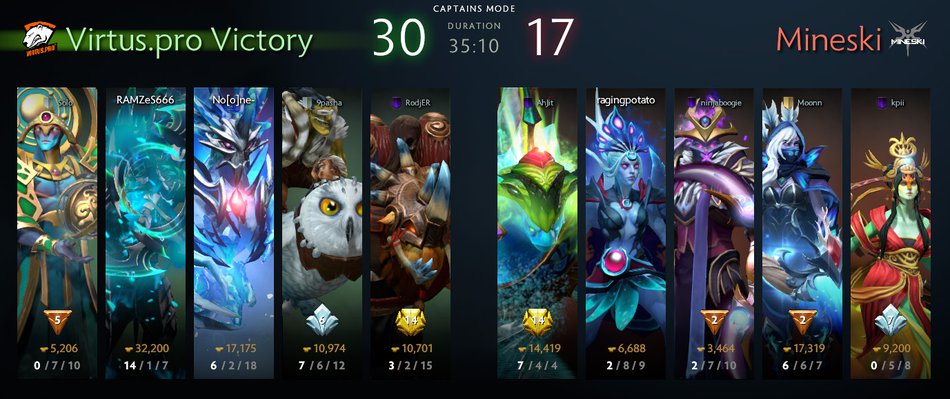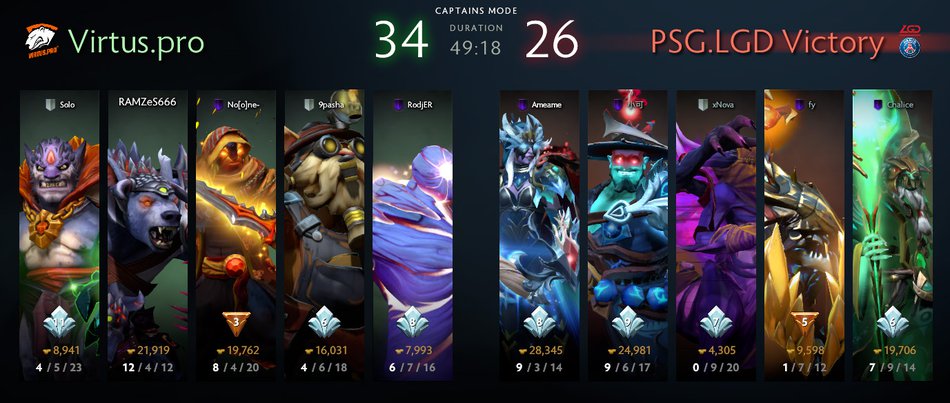MATCH ID 4734915083
In game 1
Mineski used something we mentioned is a big advantage in Drow drafts. They
first-picked Drow, but then picked Morph in the later stage of the draft as
their true pos. 1. Carry. Morph fits Mineski’s lineup very well – he benefits
from the auras of Drow and Venge a lot and if he has a good start, he can
easily become a super hard carry.
In the EG
vs Liquid series, EG did something similar in game 2. They picked Alch
last, which created a big problem for Liquid, who had good heroes against Drow
but didn’t have anyone who could deal with a farmed Alch.
This game, however, turned out differently. VP
has the overall last pick in the game, which allowed them to pick up AA for
No[o]ne as a hard-counter to Morph. It’s interesting to note that they left
both their pos. 1 and pos. 2 picks for last, which gave them time to adjust
their strategy.








